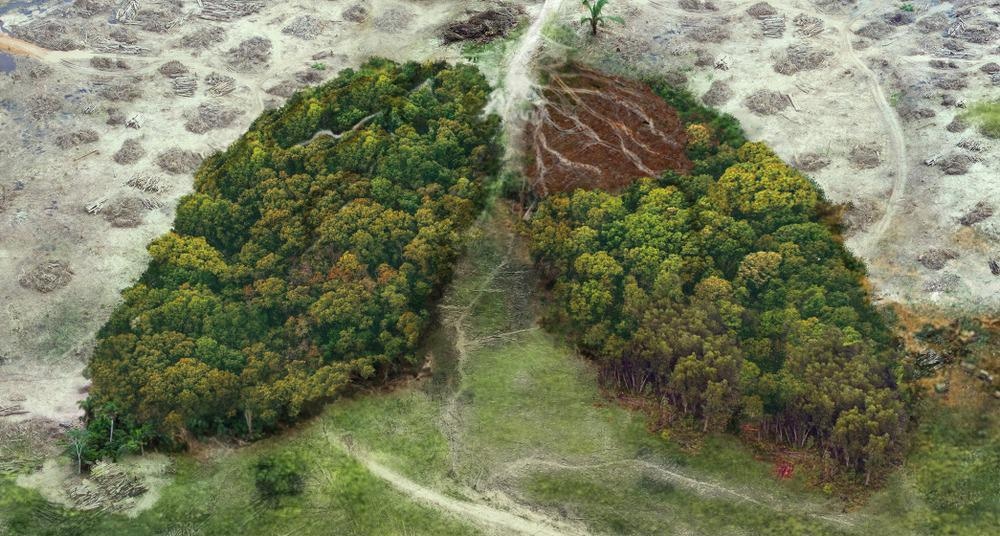Climate change is currently the most important issue facing the world. While a multitude of strategies is being implemented and developed worldwide to tackle climate change at all angles, it seems that we are looking away from the planet’s degraded forests, even though successful reforestation projects could play a major role in mitigating carbon emissions.

Image Credit: Chayakorn Buntharaksa/Shutterstock.com
Deforestation is continuing, driven by the short-term benefits it offers, while the greater, more important long-term benefits, such as providing the world with huge carbon sinks, are being sacrificed.
Forests currently cover roughly 30% of the world’s above-water land area. However, this proportion is reducing at an alarming rate. Over 500,000 square miles of forest were lost between 1990 and 2016, representing the loss of tree coverage over a land size greater than South Africa.
According to a study published in Nature, in comparison with the global estimated tree population prior to deforestation, the current global tree population is 46% less than it once was. Almost one out of every two trees has been lost. The Amazon rainforest has lost 17% of its trees in the last 50 years, with deforestation rates rising in recent years.
A number of reforestation projects are being initiated by organizations worldwide to address the growing issue of degraded forests, protect the world’s biodiversity, and help mitigate climate change.
What is Reforestation?
Reforestation is the most important approach to tackling the rapidly increasing loss of trees across the planet. In recent years, public, governments, and global organizations have become more aware of the increasingly pressing issue of deforestation. As a result, a movement to preserve existing forest ecosystems and restore lost ones has been established.
Reforestation involves planting trees, usually in great capacities, to help restore forests that have been destroyed by deforestation, to build new forests, and to offset carbon emissions.
Reforestation projects are happening all over the world. In Tanzania, for example, 2 million trees have been planted over the course of a decade by residents on the small island of Kokota. The EU has made reforestation projects a focus of the region’s climate mitigation efforts, as, for the first time, the planting or protection of forests was counted and recognized in the 2015 Paris climate accord to offset emissions.
The EU is now moving towards permitting countries to include reforestation efforts in their climate change plans and some countries have invested billions of dollars in tropical forestation projects. China has announced plans to replant enough trees to cover an area four times the size of the UK.
The holistic approach to reforestation has emerged as a particularly successful route to achieving the restoration of degraded forests. Since 2014, the United Nations Environment project has been working on an initiative in Central Kalimantan, Borneo, which recruits local farmers to plant fast-growing tree species in agroforestry systems. The project assumes a holistic approach, where land surveys are conducted to help select optimal sites for farmers to plant on. Seedlings are provided to the farmers at no cost and they are given assistance in implementing, monitoring and documenting the progress of their reforestation efforts.
Farmers are also assisted in selling their sustainably harvested forest products in the right markets. The project currently has 620 hectares under reforestation, with a goal to extend this to 1,500 ha within five years. Overall, the project intends to replant 100 million trees in Borneo.
Embracing a holistic approach is important to establishing sustainable reforestation on a large scale. It also benefits the local community and promotes education on the environment and climate change, key factors to further tackling carbon emissions.
How can Reforestation Affect Biodiversity?
A total of 88% of land animals and plant species live in the Earth’s forests. Deforestation removes the habitats of these animals and plants, threatening their survival. Species such as the orangutan and Sumatran tiger are those at particular risk of extinction due to deforestation.
Cutting down trees also reduces coverage from predators and removes sources of food and shelter from the elements. Overall, it disrupts the entire ecosystem. The removal of trees also alters the forest’s ability to block heat from the sun in the day and retain temperatures at night, thus causing extreme temperature swings that further threaten the animals and plants that live there.
The forest in Borneo is home to orangutans, elephants, and various wild cats, all of which are threatened by deforestation. Unless reforestation projects are undertaken to revive degraded forests, the world stands to suffer a significant loss to its biodiversity.
Reforestation Projects and Climate Change
Restoring degraded forests is also vital to combating climate change. Cutting down the world’s trees both contributes to carbon emissions and reduces the planet’s ability to absorb the existing carbon dioxide in the atmosphere.
Data has revealed that if tropical deforestation was a country, its carbon dioxide-equivalent emissions would rank it in third place, behind China and the US. Reforestation projects can increase one of the world’s most important carbon sinks, its forests, which act as a natural environment with the ability to absorb carbon dioxide from the atmosphere.
References and Further Reading
Deforestation explained. [Online]. National Geographic. Available at: https://www.nationalgeographic.com/environment/article/deforestation
Popkin, G. (2019) How much can forests fight climate change? Nature, 565(7739), pp.280–282. https://www.nature.com/articles/d41586-019-00122-z
Seeding 100m trees to restore Borneo’s rainforests. [Online]. UN Decade on Ecosystem Restoration, Available at: https://implementers.decadeonrestoration.org/implementers/4/100-million-trees-for-borneo
Disclaimer: The views expressed here are those of the author expressed in their private capacity and do not necessarily represent the views of AZoM.com Limited T/A AZoNetwork the owner and operator of this website. This disclaimer forms part of the Terms and conditions of use of this website.